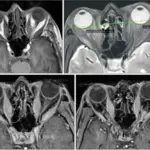Metabolic and nutritional neuropathies are neuron damages associated with metabolic disorders and nutritional disorders.
Examples of metabolic and nutritional neuropathies include:
- Diabetic neuropathy
- Uremic neuropathy
- Neuropathy due to vitamin B12 deficiency
What is Diabetic Neuropathy?
Diabetic neuropathy is a common complication of diabetes mellitus.
What is the Pathology of Diabetic Neuropathy?
The pathology of diabetic neuropathy is:
-Etiology: The cause of diabetic neuropathy is long-standing diabetes.
-Genes involved: NA.
-Pathogenesis: The sequence of events that lead to diabetic neuropathy is not completely understood.
-Morphology: NA.
-Histology: The morphology associated with diabetic neuropathy shows thickening, hyalinization and endoneurial arterioles.
How does Diabetic Neuropathy Present?
Patients with diabetic neuropathy typically have equal frequency present at an age range of any age. The symptoms, features, and clinical findings associated with diabetic neuropathy include numbness, loss of balance, prickling pain, tingling sensation, aching, tightness, muscle weakness of the extremities, and gait instability.
How is Diabetic Neuropathy Diagnosed?
Diabetic neuropathy is diagnosed through the clinical presentation, laboratory studies- hemoglobin A1c and fasting plasma glucose. Imaging studies- MRI of cervical, lumbar, thoracic, regions exclude another cause. Needle electromyography.
How is Diabetic Neuropathy Treated?
Diabetic neuropathy is treated through the management of diabetes. Medical care including glycemic control, antidepressants and anticonvulsant drugs for neuropathic pain may be needed.
What is the Prognosis of Diabetic Neuropathy?
The prognosis of diabetic neuropathy is good, but the quality of life is reduced.



